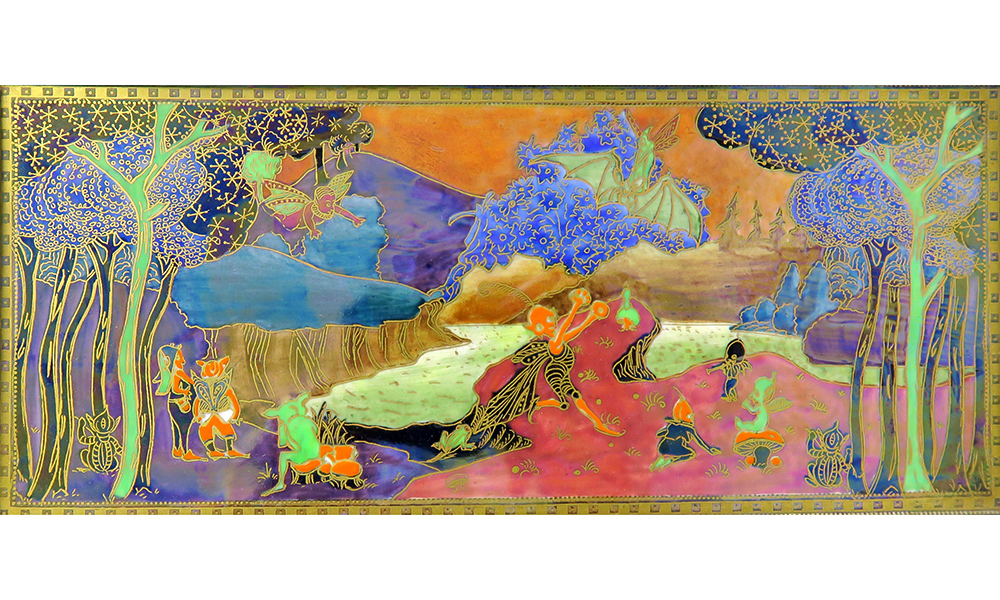
Picnic by a River

Picnic by a River

Picnic by a River
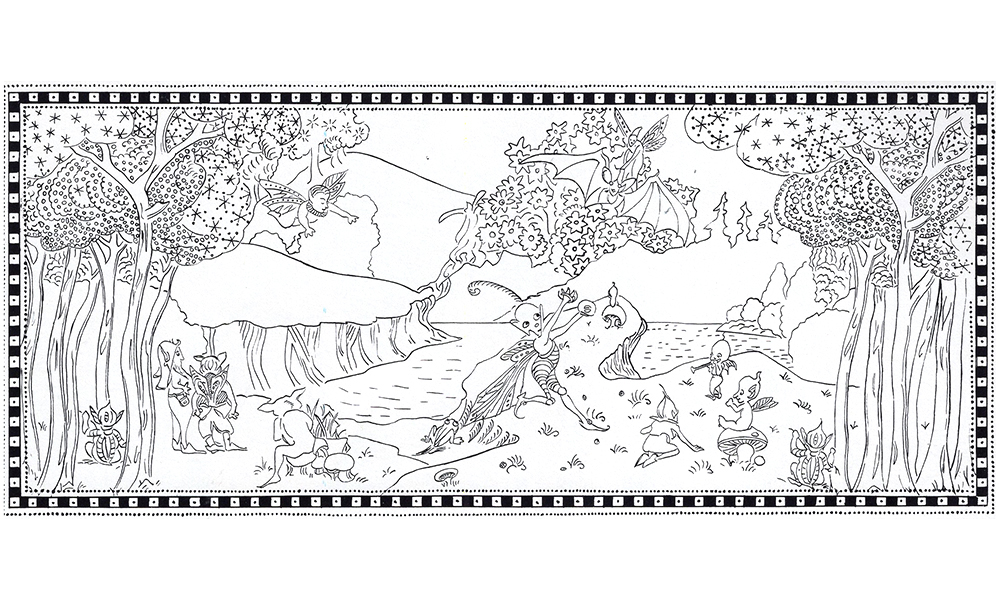
Picnic by a River
Pictures in porcelain are practical as well as beautiful as the image is protected by the glaze, never fades and is easily cleaned. Not surprisingly, Wedgwood introduced several rectangular and circular plaques, in their successful Fairyland Lustre collection. Their lustrous flat surfaces reflect the vision of paradise in porcelain created by Daisy Makeig-Jones.
The first Fairyland Lustre plaque design was introduced in 1917 and was called Picnic by a River by the Wedgwood factory. It measures 10 by 4 ½ inches and was framed in dark ebonized wood. In Glimpses of Fairyland Daisy wrote a long story about her inspiration from the Norse story of Odin and the Elves. However, it is hard to discern the connection in this scene unless these are “the light elves who had never done any harm who were allowed to dwell among the flowers and play with the wild bees.” The lead elf reaches up to another riding on a bat. There were four color variations of the plaque, each with different pattern numbers, featuring blue, orange and violet skies and blue, purple, green and violet rivers. The version on display in the Bowled Over by Fairyland exhibit has an orange sky with a green river. The WMODA also has a version with blue sky and blue river in the Innovations gallery.
Daisy’s second plaque design Elves in a Pine Tree was larger, measuring 10 by 7 ½ inches, and it was also made in four color variations. The WMODA version has a dark green frame, while other variations include purple, orange, and blue. The lead elf is sitting in a pine tree smoking a large pipe while others admire tall flowers on the ground. This design was used by Wedgwood as a shop display to advertise their Fairyland China Lustre.
The Elfin Palace plaque was the only Fairyland pattern to be made in mother-of pearl, black and gold, and so far, it has eluded the Wiener collection as has the Bubbles plaque. However, we do have a spectacular Torches plaque, introduced in 1922, which depicts a shimmering palace out of the Arabian Nights at the top of a flight of steps illuminated by torches and Chinese lanterns. Three little elves swim towards the stairs while birds nest in a tall tree threatened by a serpent coiling up the trunk, as seen on the Tree Serpent vase. The complex scene is watched by a little baby, Daisy’s first human intruder to Fairyland.
The 1922 scene on the Torches plaque was revived by Wedgwood in 1976 as a reverse image for the Enchanted Palace design. This modern plaque was framed in maple wood and was made in a limited edition of 250. It comes up for sale at auction quite frequently compared to the rare original plaques.
The Imps on a Bridge design is one of the most iconic Fairyland patterns and it appears on vases and plates as well as on a large earthenware plaque, 16 x 11 inches, two round plaques, and a round dish, 14 inches in diameter. Daisy’s imps bear a strong resemblance to the Kewpies created by the American poet-artist Rose O’Neill. They featured in strip cartoons and were fashioned into dolls which were all the rage in the early 1900s. In the Imps on a Bridge and Tree House design, a procession of imps make their way cross a bridge while above them two winged fairies construct a tree house watched by another. An imp paddles a canoe below and a Roc bird hovers above watching for its prey. This enormous legendary bird appears in mythology of the Middle East, where it is credited with being able to carry an elephant in its talons. The Roc appears in Sinbad’s voyage in The Tales of the Arabian Nights where it is intent on destroying entire ships in revenge for destruction of its giant egg.
In the Roc center design for plates, Daisy took elements from the Imps on a Bridge pattern with the Roc bird as a dominant feature. Seven decorative plates were introduced with five different rim designs in 1923. WMODA has several of these plates including a rare one in which the Roc bird is missing.
Perhaps the rarest of all the Fairyland plaques is the last one, entitled The Stuff that Dreams are Made Of. According to Una des Fontaines, who wrote the classic reference book on Wedgwood Fairyland Lustre, it is an “illogical and bizarre design with symbolic overtones, the interpretation of which had perhaps better be left to a psycho-analyst.” Unusually for Daisy, it depicts two female nudes and a baby on the crest of a wave. Later in her career, Daisy was becoming increasingly eccentric according to her detractors at Wedgwood and spent much of her time “far away in Fairyland.” When she was accused of day-dreaming, she would respond with her favorite Shakespeare quote “We are such stuff as dreams are made of” which she engraved on her last design. Daisy finally left the factory on bad terms in 1931, having arranged for the work remaining in her studio to be smashed.
More about Fairyland Lustre...
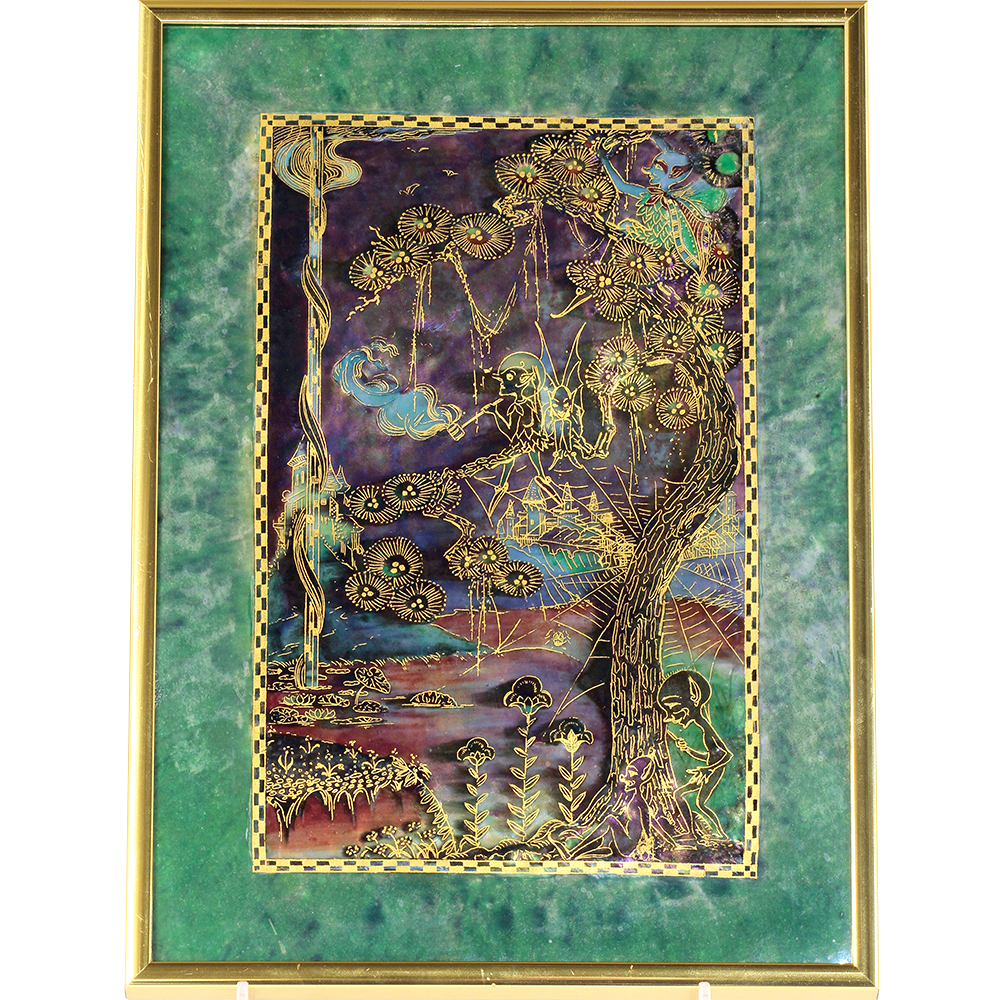
Elves in Pine Tree Plaque
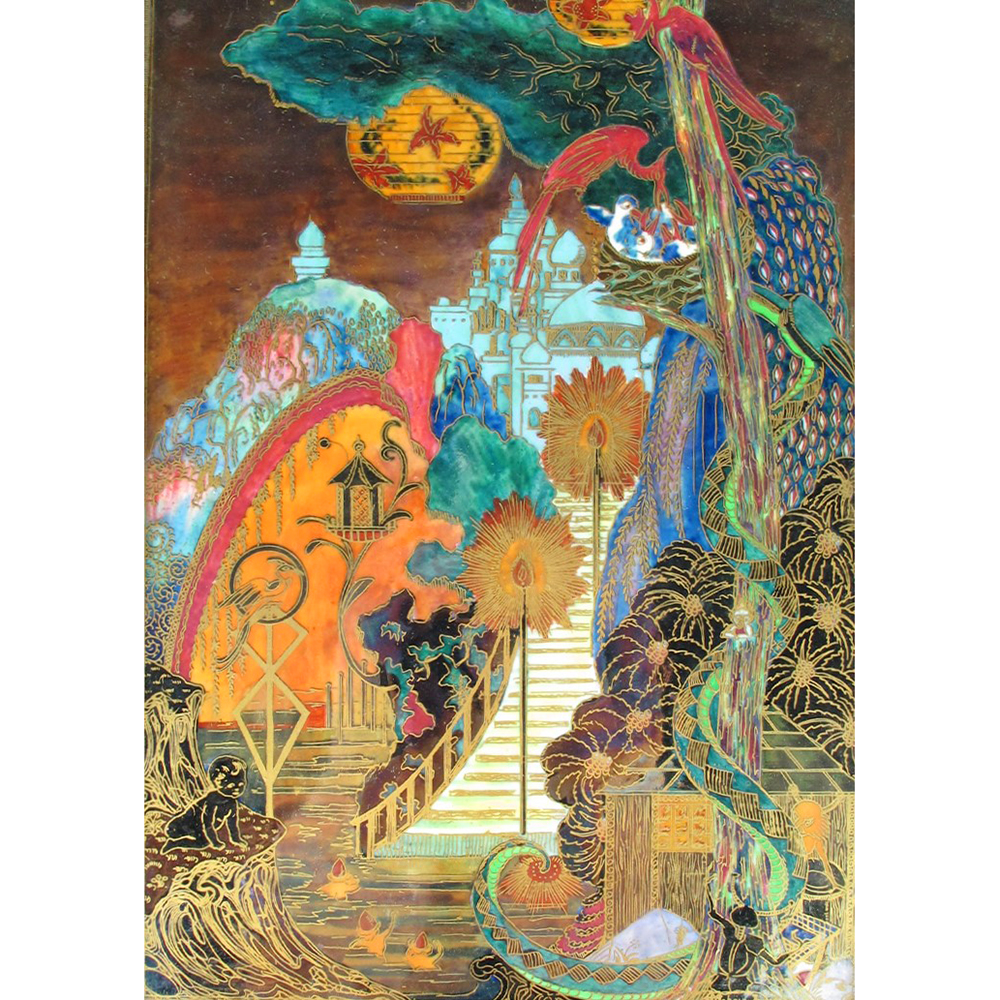
Torches Plaque
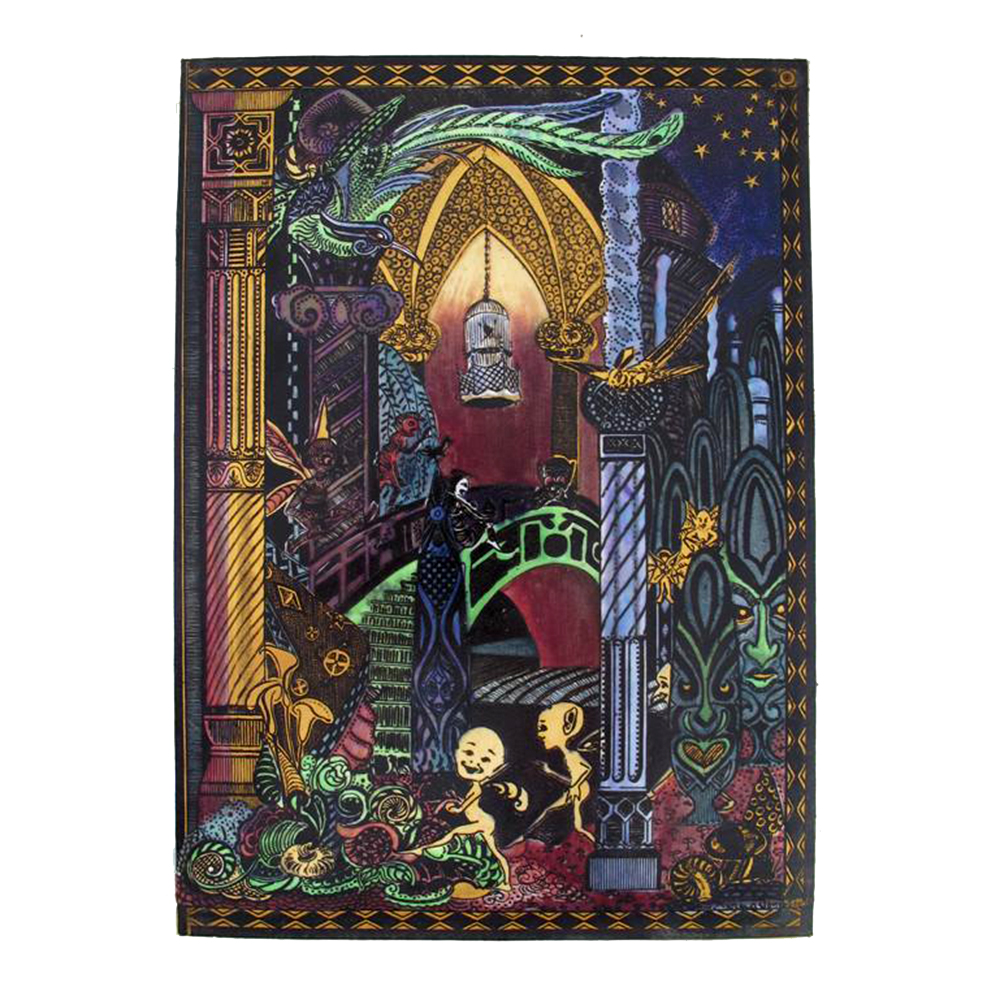
Elfin Palace Plaque. Courtesy of Woolley & Wallis
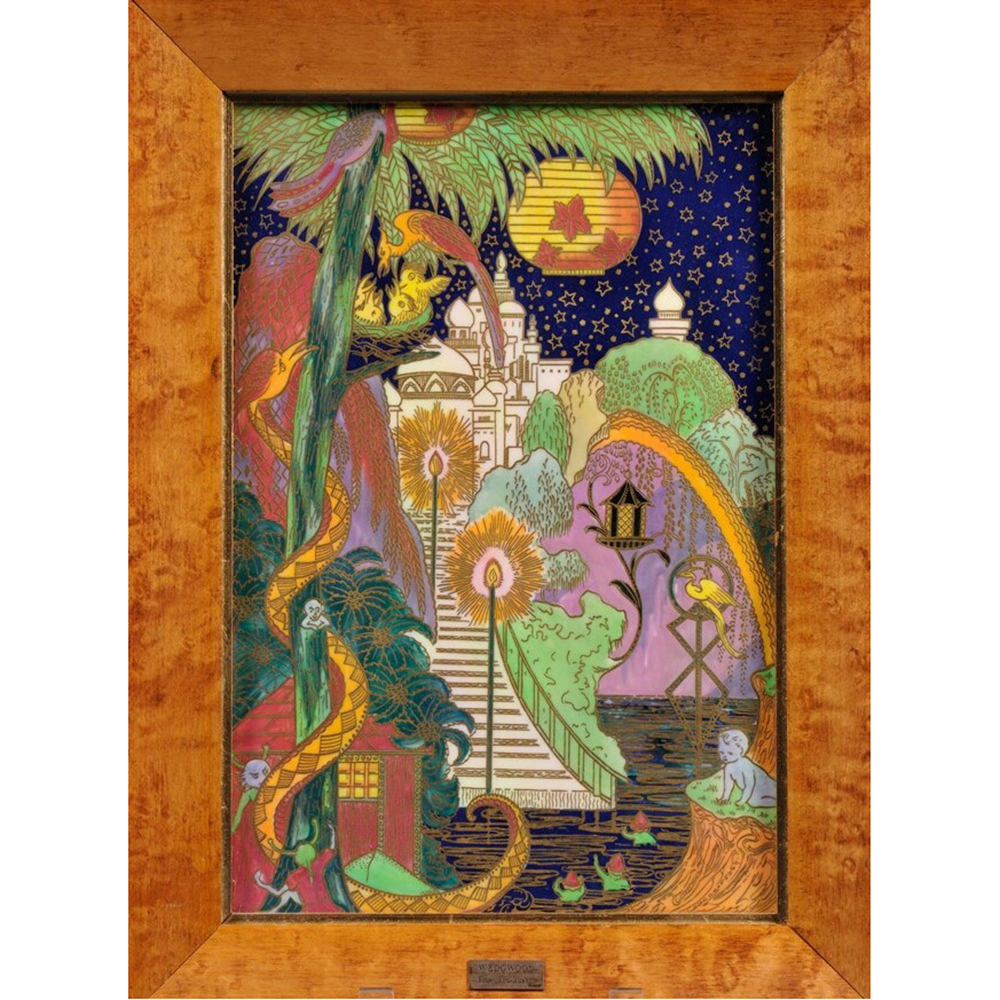
Enchanted Palace Plaque
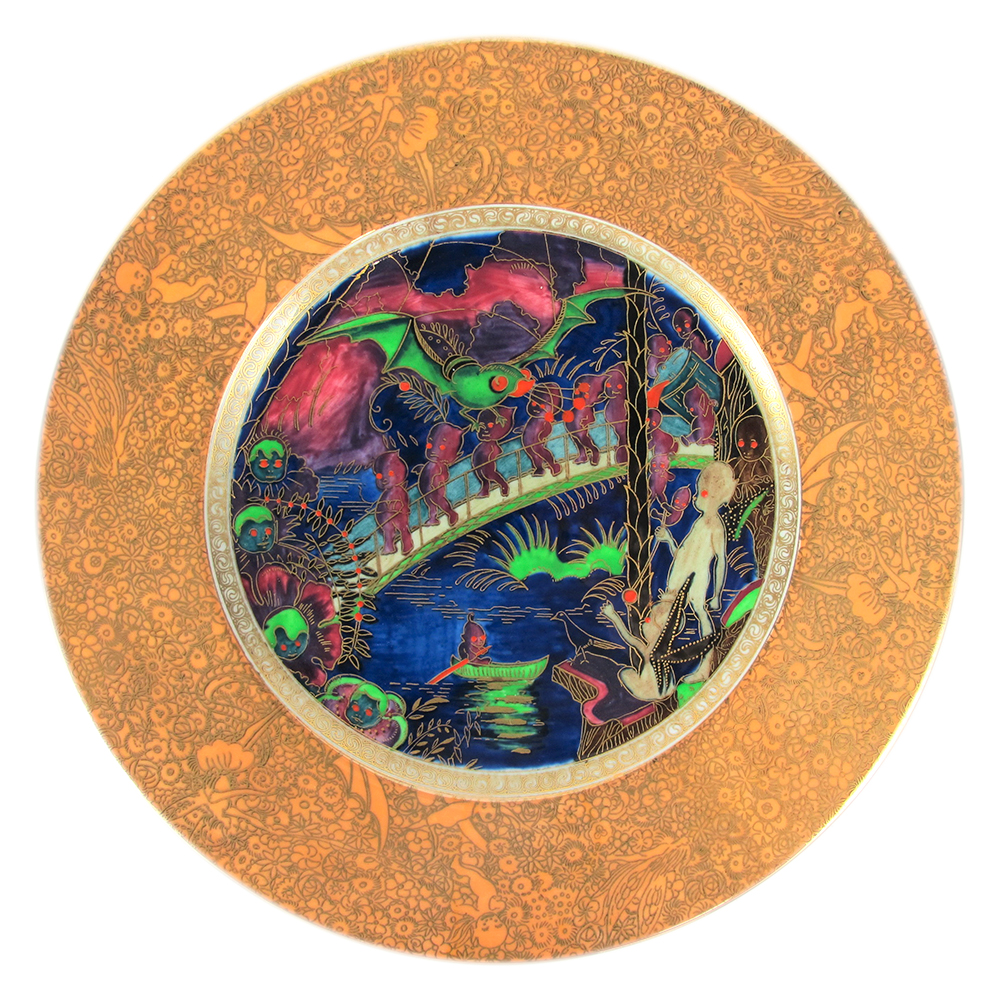
Roc Imps on a Bridge Plate
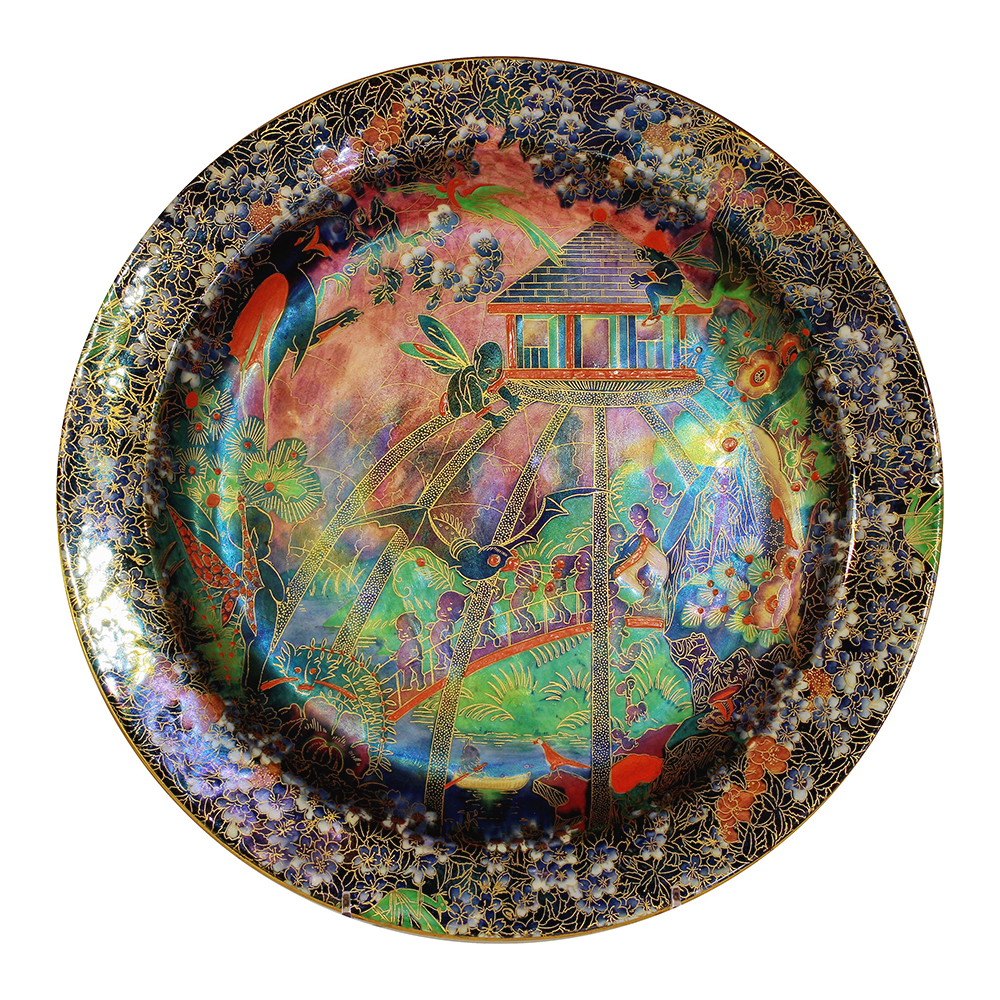
Imps on a Bridge and Treehouse Charger
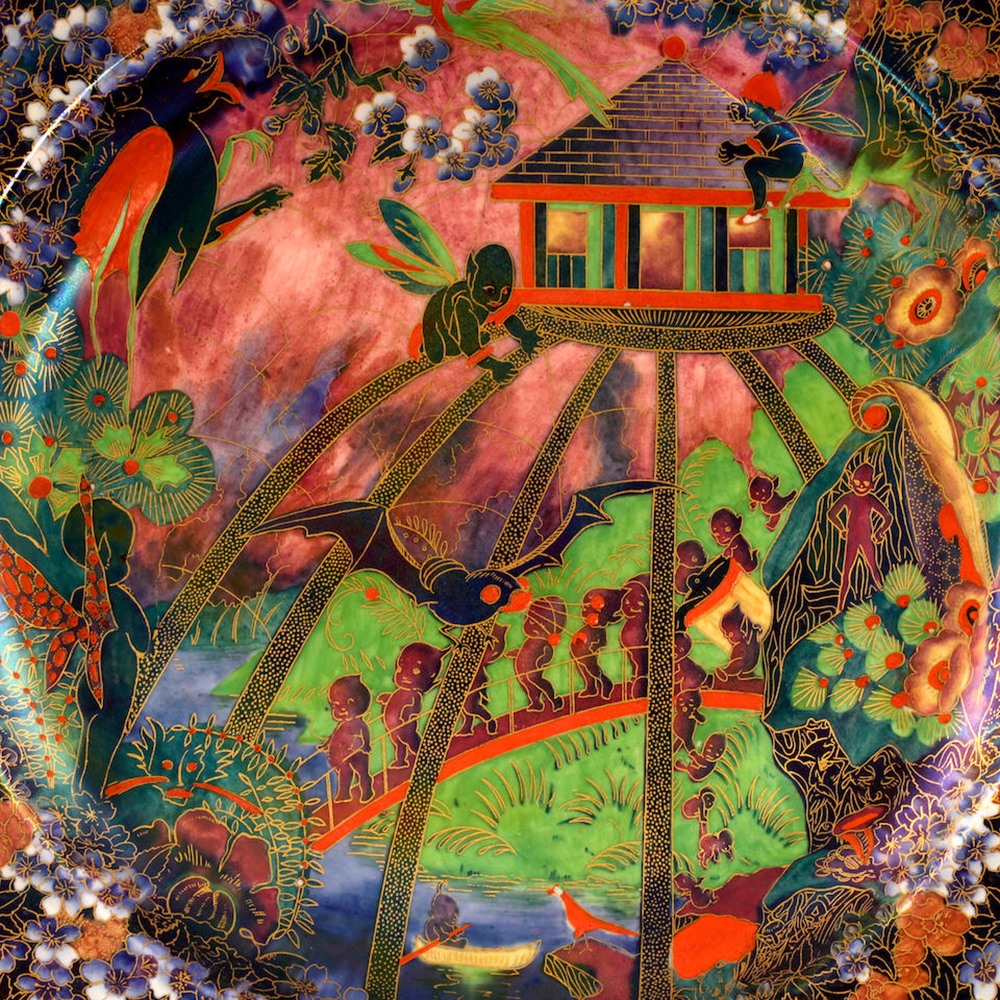
Imps on a Bridge and Treehouse Detail
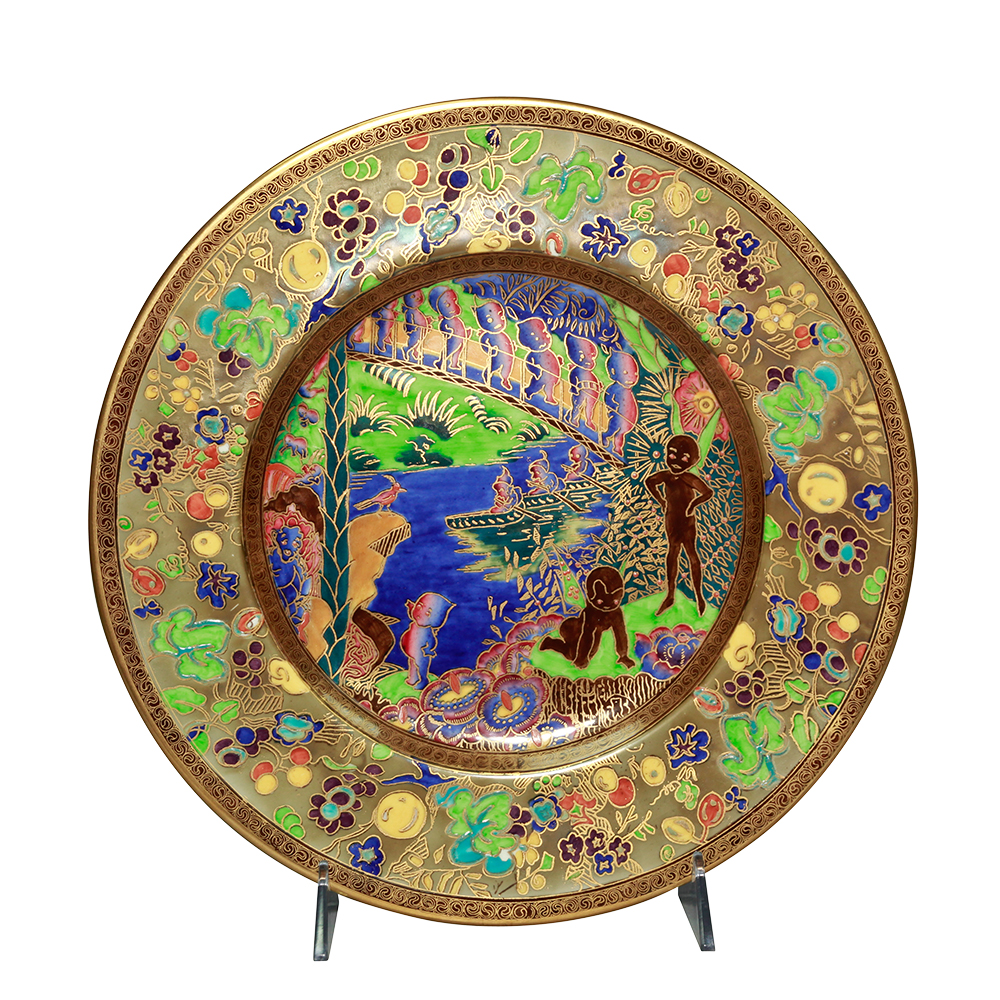
Rare Roc Plate with missing bird
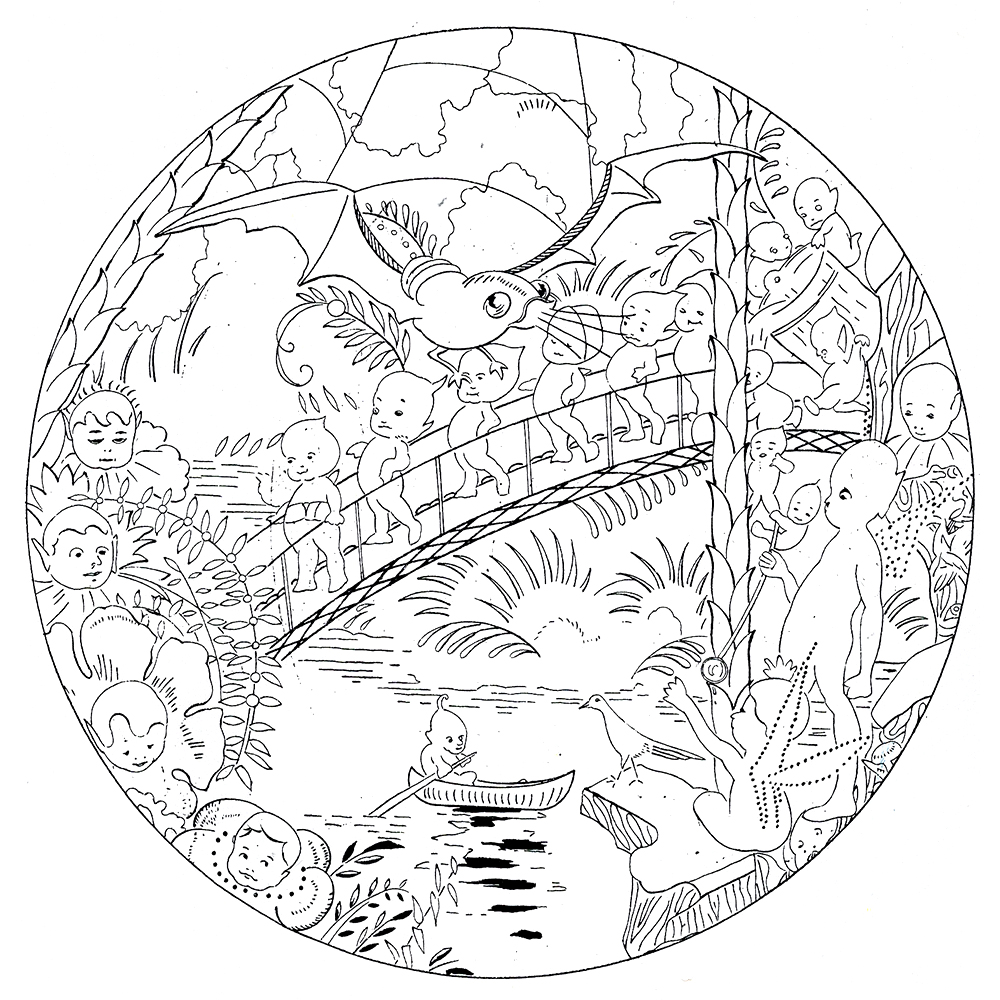
Roc Plate Illustration

Roc Illustration by H.J. Ford
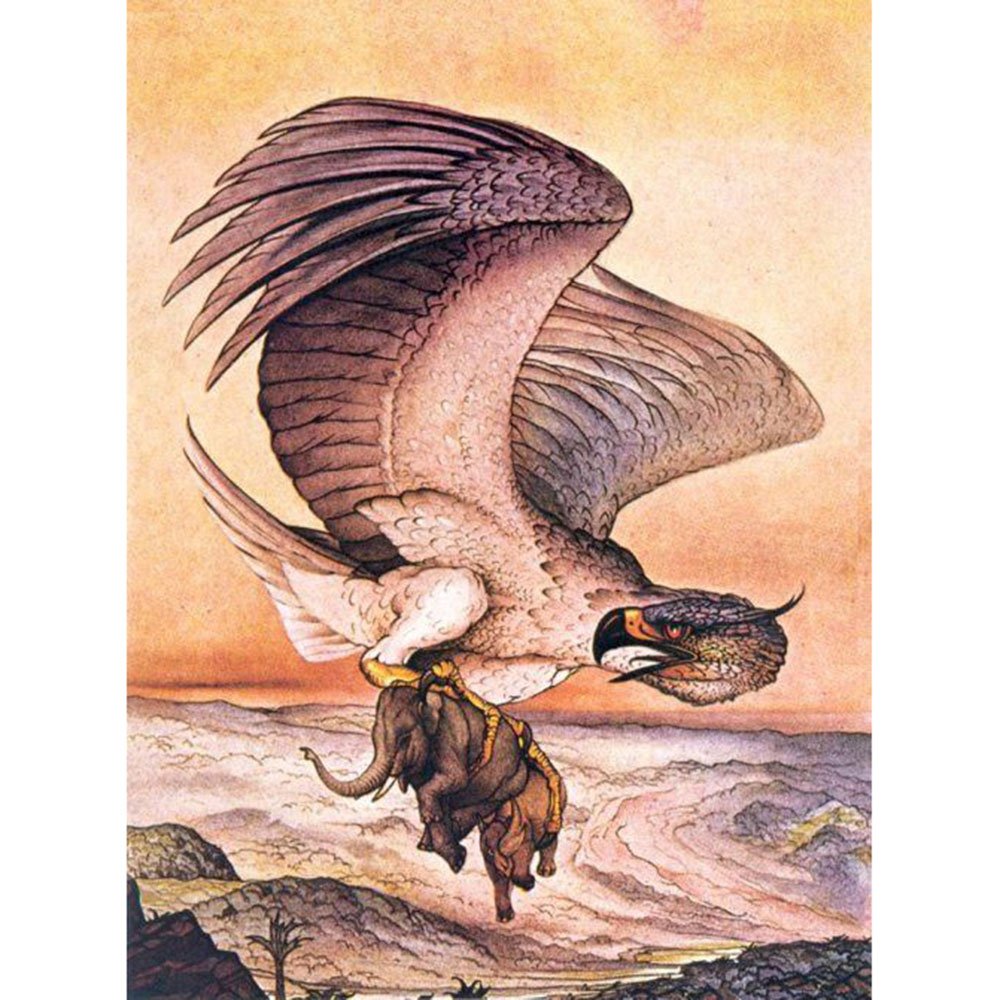
Roc Illustration by E. Detmold
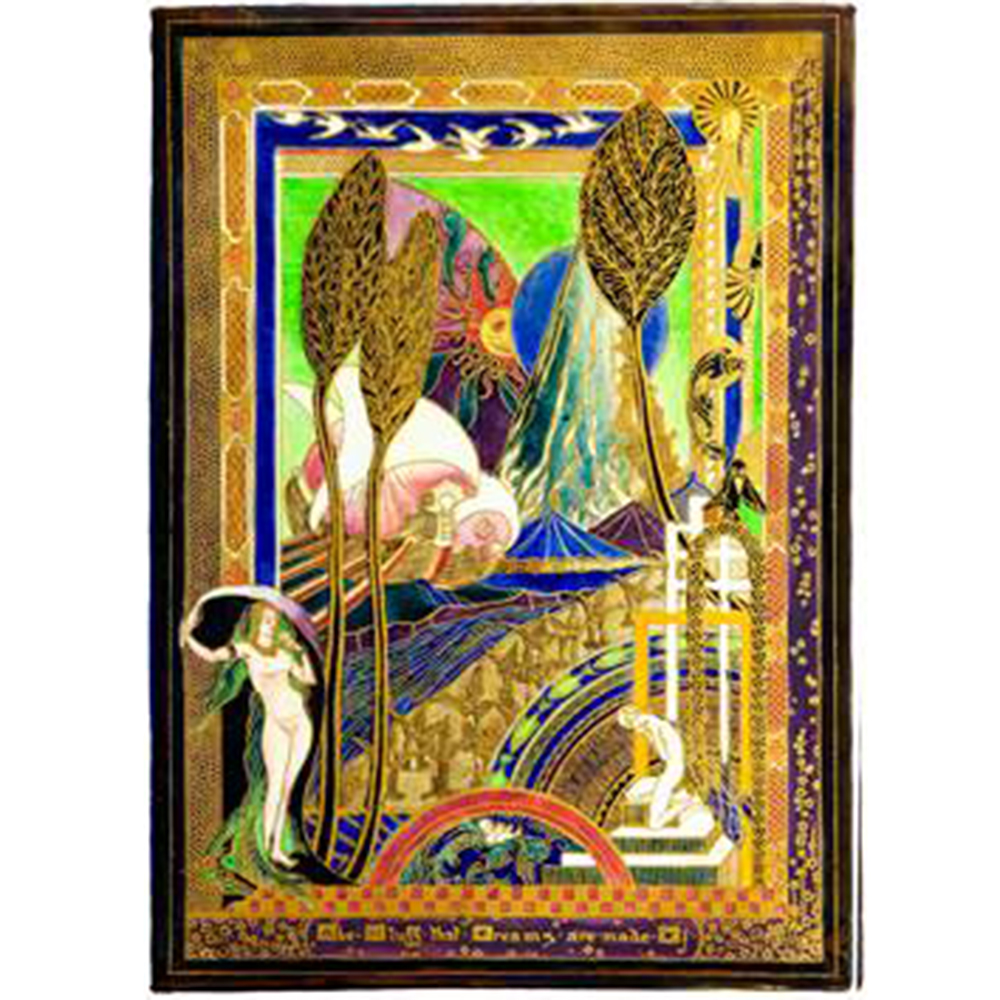
The Stuff that Dreams are Made Of. Courtesy Hansons
